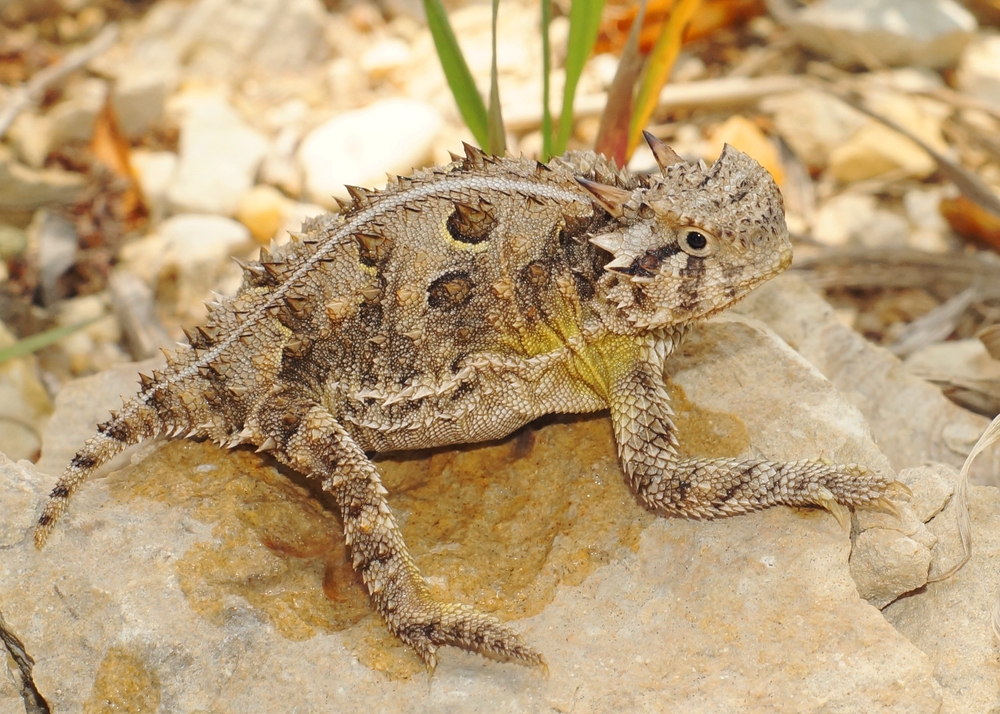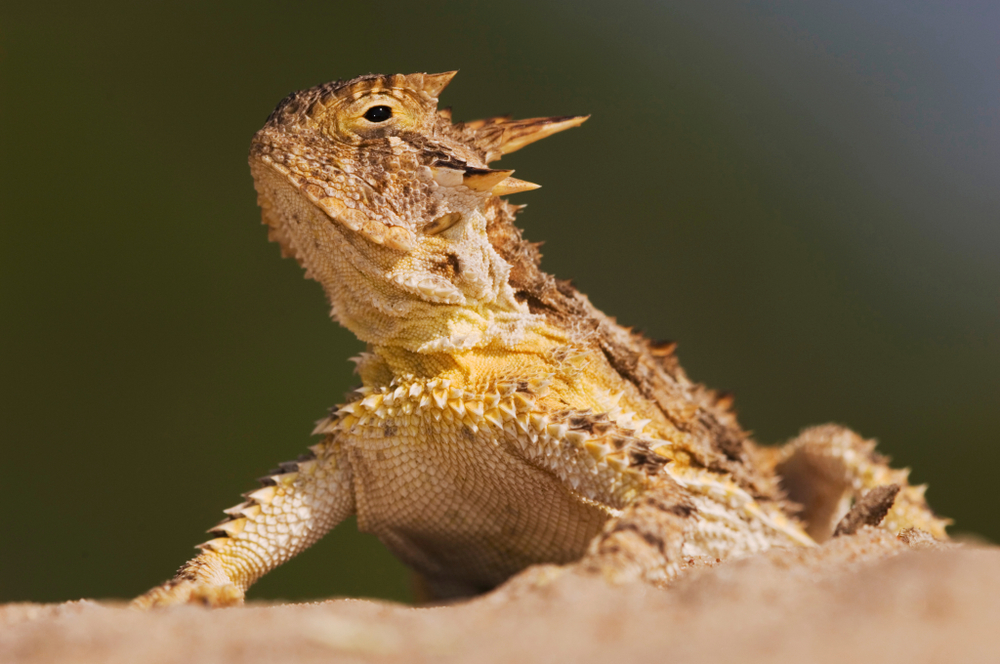Horned Lizards differ from other lizards in several distinctive ways:
1. Physical Appearance:
- Horned Structure: Horned Lizards are named for the prominent horn-like spines on their heads, which are not found in most other lizard species.
- Body Shape: They have a uniquely flattened, round body that helps in camouflage and thermoregulation, unlike the more elongated bodies of many other lizards.
- Skin Texture: Their skin is covered with rough, spiny scales, giving them a rugged texture.
2. Specialized Diet:
- Many Horned Lizard species primarily feed on ants, particularly harvester ants, which is a highly specialized diet compared to the more varied diets of other lizard species.
3. Defensive Mechanisms:
- Some Horned Lizard species can squirt blood from their eyes as a defense against predators, a rare ability in the animal kingdom.
- Their coloration and body shape provide effective camouflage against predators and for ambushing prey.
4. Water Collection:
- Horned Lizards have the ability to collect and channel water to their mouths through their skin, an adaptation particularly beneficial in arid environments.
5. Habitat:
- They are primarily found in arid and semi-arid environments, including deserts and scrublands, and have adapted to thrive in these harsh conditions.
6. Behavior:
- Horned Lizards tend to be less agile and quick-moving compared to other lizards, relying more on their camouflage and defensive tactics for protection.
7. Conservation Status:
- Many Horned Lizard species face significant threats from habitat loss, invasive species, and environmental changes, leading to conservation concerns.
These unique characteristics set Horned Lizards apart from other lizard species, both in terms of their physical traits and their ecological adaptations. They are a fascinating example of evolutionary specialization and adaptation to specific environmental niches.




































































